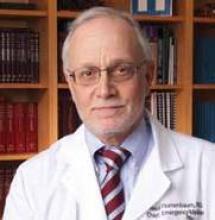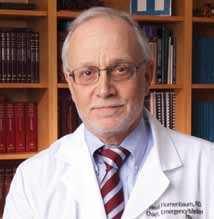User login
This past year has been a challenging one for emergency physicians, beginning with the large numbers of patients coming to EDs because of a flu virus that was seemingly resistant to prior vaccination and striking at a time when many East Coast EDs were still struggling to deal with health issues from Hurricane Sandy. The year was also characterized by an overwhelming number of patients with acute psychiatric or behavioral conditions who crowded EDs waiting hours or days for inpatient psychiatric beds. Overshadowing everything, especially toward the end of the year, were the contentious legislative attempts to block implementation of the Affordable Care Act, followed by the painfully evident flaws presented by the plan itself. All of these problems placed increased burdens on already overburdened EDs and EPs trying to hold high the only true safety net for the nation’s ills.
Yet, despite the Herculean efforts of EPs, the public seems to have little sense of just how much EPs do to make up for the shortcomings in our nation’s health-care system. So many people now take emergency care and EDs for granted that even some EPs have begun to question what they are accomplishing. As 2013 draws to a close, we would like to share some thoughts with you from December 2007—as appropriate now as they were then.
Somewhere in this country, an emergency physician may be reading this between patients on the night of December 24th or December 31st. If so, I would like to begin by thanking you on behalf of all of the patients who you are treating on this shift, all of the people who might unexpectedly need your care during these hours, and all of your colleagues who are able to celebrate the holiday with their families, while you are serving on the front line of delivering health care. Few specialties require as much “off-hour” active duty as emergency medicine.
The history of our specialty is replete with acts of personal sacrifice and courage. Before emergency medicine became a specialty in 1979, many talented physicians dedicated some or all of their professional activities to caring for patients in what was then a medical wilderness. In those days, no one seemed overly concerned about citizenship, certifications, or credentials—just as we don’t typically think of the Pilgrims as “undocumented immigrants,” or wonder what type of driver’s licenses the first motorists were required to have.
During the late 1970s and early 1980s, there were few trained or certified poison center information specialists and no fellowship-trained medical toxicologists. In many cities, emergency physicians from various hospitals volunteered to back up the poison center personnel who answered the phones, especially during nights and weekends. Similarly, before fellowship training in prehospital care became available, many emergency physicians were expected to organize, train, and supervise EMTs and paramedics operating in their areas. Few EPs expected or received compensation for either of these activities, and few expressed concern over the additional exposure to medical malpractice liability.
All of this is worth remembering at this time of year, especially on days when nothing seems to go right. Though it is easy to focus on such days, we should also try to recall the many patients who arrive in our EDs desperately ill, but afterward are able to return home and resume their lives because of our efforts. Unfortunately, we never get more than a handful of such positive follow-ups from either colleagues or patients.
Perhaps what we could really use right now is a remake of Frank Capra’s classic film “It’s a Wonderful Life.” Only this time, it would demonstrate how much worse the world would be if emergency medicine had never been created. Maybe we could call the movie “It’s a Wonderful Specialty.”
Wishing all of our emergency physician readers a wonderful 2013 holiday season and a happy and healthy 2014!
This past year has been a challenging one for emergency physicians, beginning with the large numbers of patients coming to EDs because of a flu virus that was seemingly resistant to prior vaccination and striking at a time when many East Coast EDs were still struggling to deal with health issues from Hurricane Sandy. The year was also characterized by an overwhelming number of patients with acute psychiatric or behavioral conditions who crowded EDs waiting hours or days for inpatient psychiatric beds. Overshadowing everything, especially toward the end of the year, were the contentious legislative attempts to block implementation of the Affordable Care Act, followed by the painfully evident flaws presented by the plan itself. All of these problems placed increased burdens on already overburdened EDs and EPs trying to hold high the only true safety net for the nation’s ills.
Yet, despite the Herculean efforts of EPs, the public seems to have little sense of just how much EPs do to make up for the shortcomings in our nation’s health-care system. So many people now take emergency care and EDs for granted that even some EPs have begun to question what they are accomplishing. As 2013 draws to a close, we would like to share some thoughts with you from December 2007—as appropriate now as they were then.
Somewhere in this country, an emergency physician may be reading this between patients on the night of December 24th or December 31st. If so, I would like to begin by thanking you on behalf of all of the patients who you are treating on this shift, all of the people who might unexpectedly need your care during these hours, and all of your colleagues who are able to celebrate the holiday with their families, while you are serving on the front line of delivering health care. Few specialties require as much “off-hour” active duty as emergency medicine.
The history of our specialty is replete with acts of personal sacrifice and courage. Before emergency medicine became a specialty in 1979, many talented physicians dedicated some or all of their professional activities to caring for patients in what was then a medical wilderness. In those days, no one seemed overly concerned about citizenship, certifications, or credentials—just as we don’t typically think of the Pilgrims as “undocumented immigrants,” or wonder what type of driver’s licenses the first motorists were required to have.
During the late 1970s and early 1980s, there were few trained or certified poison center information specialists and no fellowship-trained medical toxicologists. In many cities, emergency physicians from various hospitals volunteered to back up the poison center personnel who answered the phones, especially during nights and weekends. Similarly, before fellowship training in prehospital care became available, many emergency physicians were expected to organize, train, and supervise EMTs and paramedics operating in their areas. Few EPs expected or received compensation for either of these activities, and few expressed concern over the additional exposure to medical malpractice liability.
All of this is worth remembering at this time of year, especially on days when nothing seems to go right. Though it is easy to focus on such days, we should also try to recall the many patients who arrive in our EDs desperately ill, but afterward are able to return home and resume their lives because of our efforts. Unfortunately, we never get more than a handful of such positive follow-ups from either colleagues or patients.
Perhaps what we could really use right now is a remake of Frank Capra’s classic film “It’s a Wonderful Life.” Only this time, it would demonstrate how much worse the world would be if emergency medicine had never been created. Maybe we could call the movie “It’s a Wonderful Specialty.”
Wishing all of our emergency physician readers a wonderful 2013 holiday season and a happy and healthy 2014!
This past year has been a challenging one for emergency physicians, beginning with the large numbers of patients coming to EDs because of a flu virus that was seemingly resistant to prior vaccination and striking at a time when many East Coast EDs were still struggling to deal with health issues from Hurricane Sandy. The year was also characterized by an overwhelming number of patients with acute psychiatric or behavioral conditions who crowded EDs waiting hours or days for inpatient psychiatric beds. Overshadowing everything, especially toward the end of the year, were the contentious legislative attempts to block implementation of the Affordable Care Act, followed by the painfully evident flaws presented by the plan itself. All of these problems placed increased burdens on already overburdened EDs and EPs trying to hold high the only true safety net for the nation’s ills.
Yet, despite the Herculean efforts of EPs, the public seems to have little sense of just how much EPs do to make up for the shortcomings in our nation’s health-care system. So many people now take emergency care and EDs for granted that even some EPs have begun to question what they are accomplishing. As 2013 draws to a close, we would like to share some thoughts with you from December 2007—as appropriate now as they were then.
Somewhere in this country, an emergency physician may be reading this between patients on the night of December 24th or December 31st. If so, I would like to begin by thanking you on behalf of all of the patients who you are treating on this shift, all of the people who might unexpectedly need your care during these hours, and all of your colleagues who are able to celebrate the holiday with their families, while you are serving on the front line of delivering health care. Few specialties require as much “off-hour” active duty as emergency medicine.
The history of our specialty is replete with acts of personal sacrifice and courage. Before emergency medicine became a specialty in 1979, many talented physicians dedicated some or all of their professional activities to caring for patients in what was then a medical wilderness. In those days, no one seemed overly concerned about citizenship, certifications, or credentials—just as we don’t typically think of the Pilgrims as “undocumented immigrants,” or wonder what type of driver’s licenses the first motorists were required to have.
During the late 1970s and early 1980s, there were few trained or certified poison center information specialists and no fellowship-trained medical toxicologists. In many cities, emergency physicians from various hospitals volunteered to back up the poison center personnel who answered the phones, especially during nights and weekends. Similarly, before fellowship training in prehospital care became available, many emergency physicians were expected to organize, train, and supervise EMTs and paramedics operating in their areas. Few EPs expected or received compensation for either of these activities, and few expressed concern over the additional exposure to medical malpractice liability.
All of this is worth remembering at this time of year, especially on days when nothing seems to go right. Though it is easy to focus on such days, we should also try to recall the many patients who arrive in our EDs desperately ill, but afterward are able to return home and resume their lives because of our efforts. Unfortunately, we never get more than a handful of such positive follow-ups from either colleagues or patients.
Perhaps what we could really use right now is a remake of Frank Capra’s classic film “It’s a Wonderful Life.” Only this time, it would demonstrate how much worse the world would be if emergency medicine had never been created. Maybe we could call the movie “It’s a Wonderful Specialty.”
Wishing all of our emergency physician readers a wonderful 2013 holiday season and a happy and healthy 2014!

